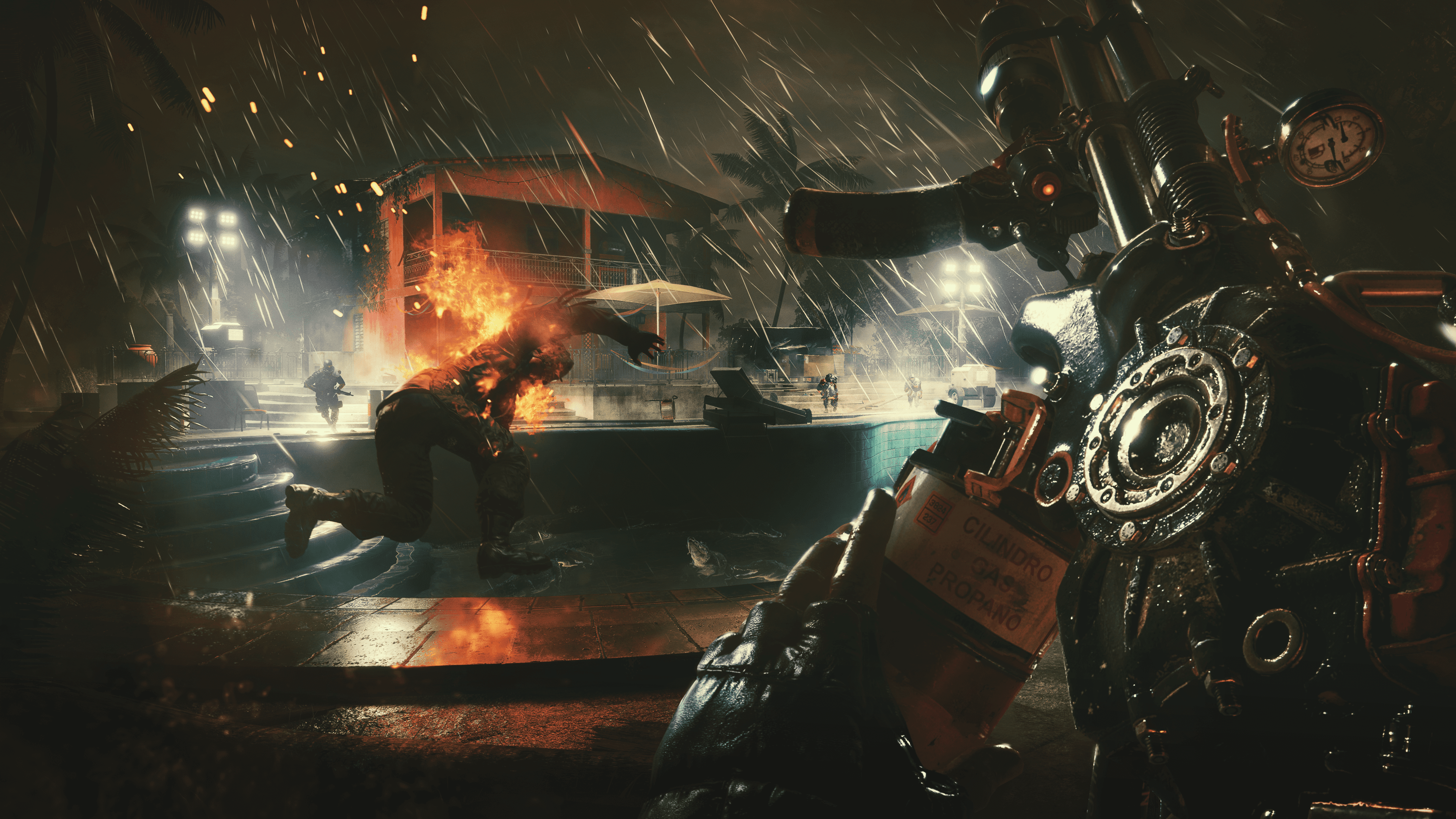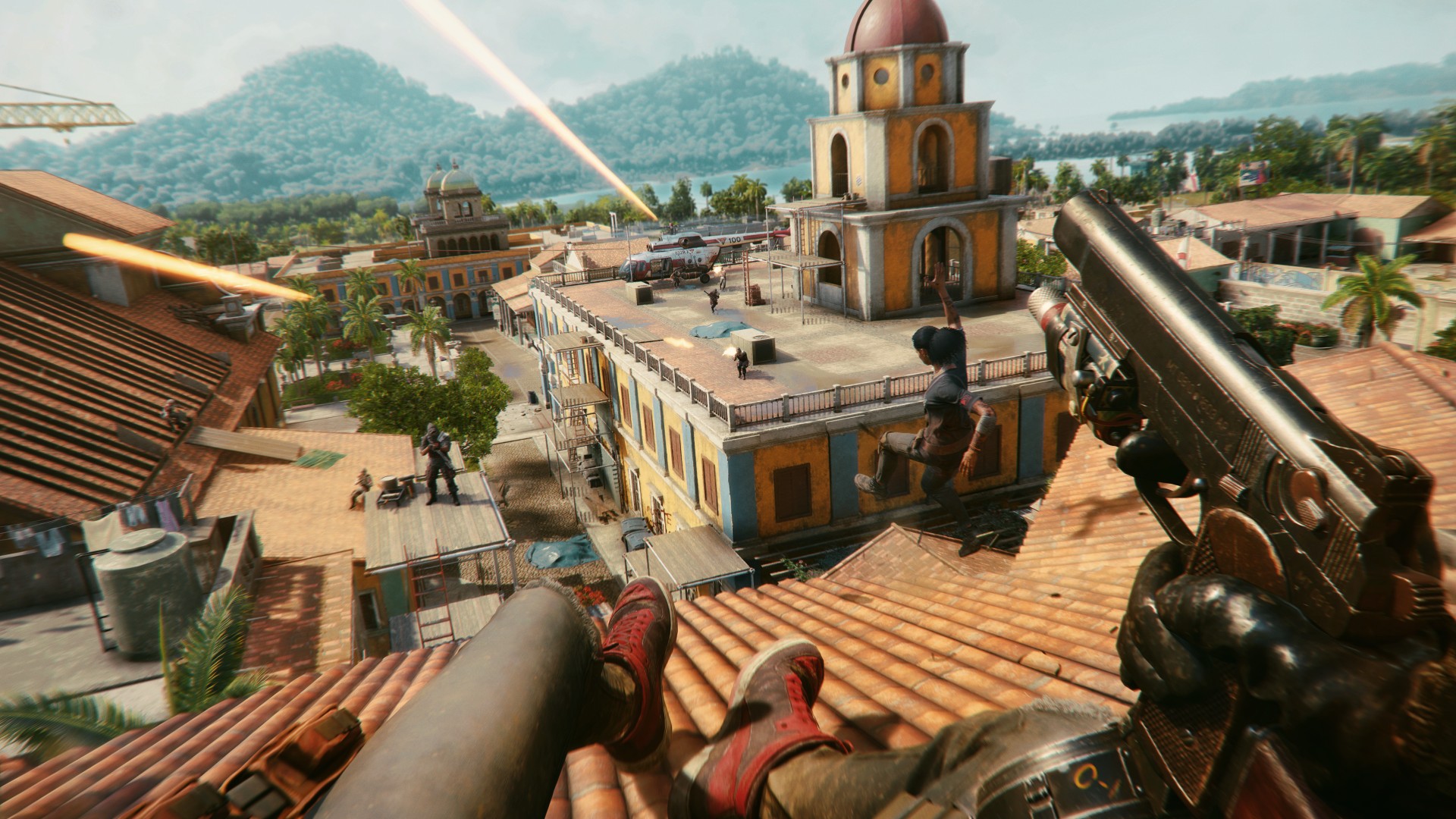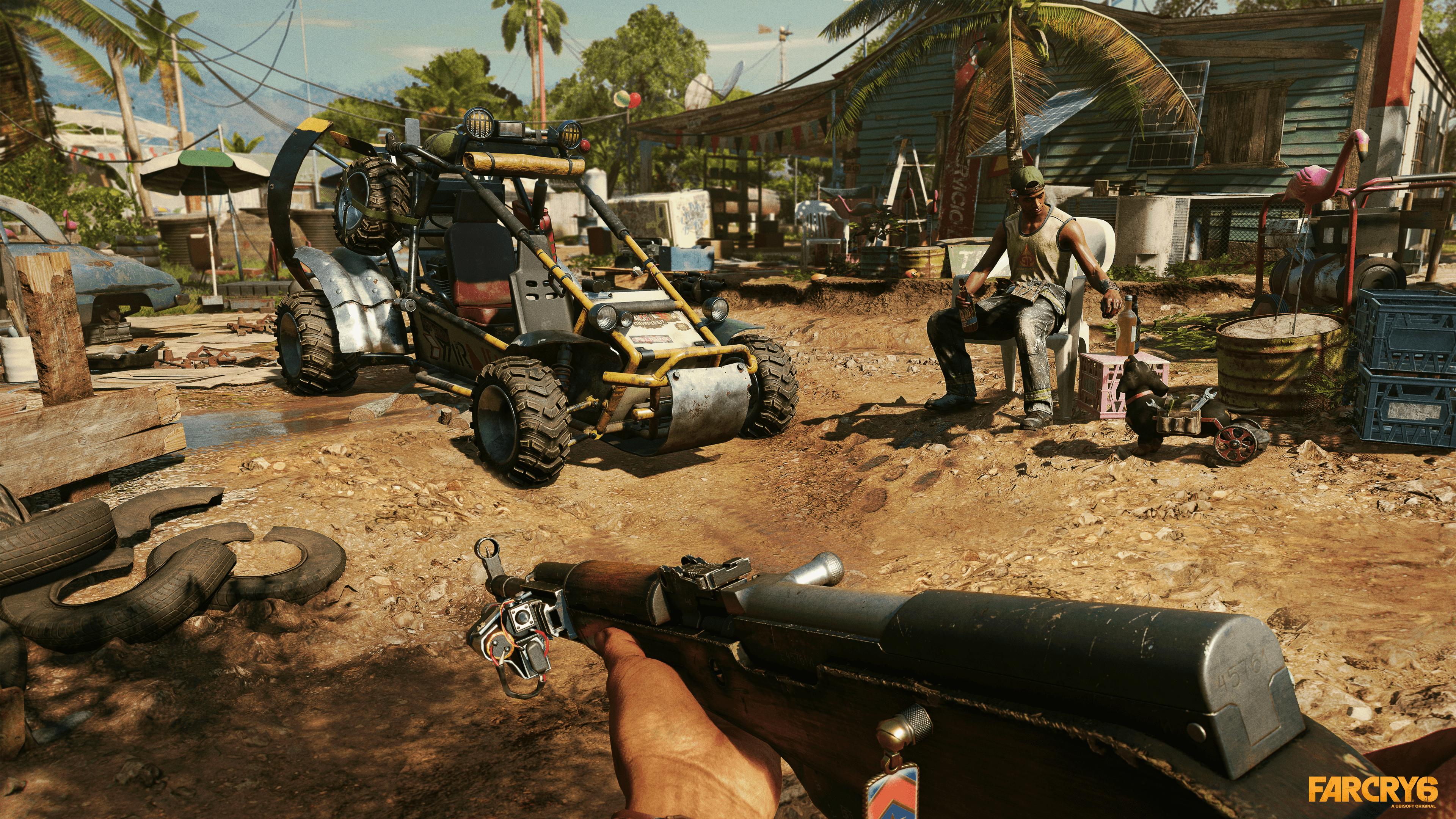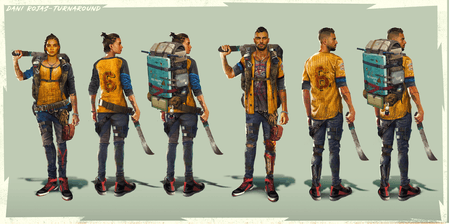SUMMARY
This is AI generated summarization, which may have errors. For context, always refer to the full article.

This article also appears on Solid State Now.
Since the franchise’s inception in the early 2000s, Ubisoft’s Far Cry games have taken us to a wide range of exotic locales, from the countryside plains of Montana to the snowy mountaintops of the Himalayas. Far Cry 6 looks to push the envelope further with its open-world setting in what is shaping up to be the most ambitious Far Cry game yet.
This time around, you’re not just exploring a region but an entire country – the fictional island nation of Yara which is in the midst of a political and social revolution against an oppressive dictator. You’re Dani Rojas, a local Yaran, who takes up arms and joins the guerilla revolution to bring down “El Presidente” himself, Anton Castillo, who’s played by Giancarlo Esposito.
We recently sat down and had a virtual one-on-one chat with Far Cry 6’s world director Ben Hall to learn more about how he and his team created an entire country for the game.
Can you tell me a bit about your role in the game’s development? What do you do? Who do you work with?
Ben Hall: My name is Ben Hall, and I’m the world director on Far Cry 6. world director is – well, first it’s the best job title on the planet. It’s a role that’s focused on the creation of Yara as a playground and as an authentic world that people can immerse themselves in.
It involves working with the level design team on missions, activities, and navigation. So it’s really a holistic role that covers a lot of different facets. It’s also a role where I work very closely with the narrative director, who builds the stories with his teams. We then take those stories and figure out the best ways to tell them in the playground; in the playspace; in the mission space.
It’s really a cool job where I get to work with a lot of great people, a lot of experts, who are the best in the world at what they do – people that look after the biomes and build the luscious jungles and the gorgeous beaches that you get to experience; people that are experts at crafting fun and exciting missions that you get to explore as you play through the Far Cry games.

Can you talk to me about how the team came to this choice in the setting?
Ben: It really started off with the core concept of guerilla fantasy. We’re making a Far Cry game, and Far Cry has its own kind of unique DNA. When we came to the idea of wrapping that with this fantasy of being a guerilla fighter, we went into research mode.
We all became like high-school kids again, and we went off to learn. It’s all about trying to understand as much of that particular topic as possible. And we’re fortunate at Ubisoft that we get to work with incredible specialists. We’ve got an internal research group called the World Texture Facility, based in our offices in Paris. We can assign specialists who we can work with and can learn from, and they craft and create lots of different stories and articles that our team can read and understand.
We’ve looked at different revolutions throughout history, but we kept coming back to Cuba as a place where there were a lot of revolutions that happened that we could tap into. We knew we wanted to create a unique story and environment. So when we started to look at Cuba, it started to resonate very much with the core pillars and DNA of Far Cry: it’s a tropical setting; it’s lush; it’s beautiful, and you can take a screenshot from almost anywhere. But there’s also so much history and so many layers that it became a really interesting place for us to focus on from a world-building perspective.
Knowing that we wanted to create an entire country brought the opportunity to explore the concept of a country that’s been frozen in time. So we got to play around with that time-shift element even though the game is set in a contemporary period. There are elements of history that we wanted to layer in with that. But we kept coming back to Cuba, the Caribbean, and Central and South America as locations of interest to us.

We felt there was a lot that we could do using these locations in telling not only our guerilla fantasy story but also to create a rich, authentic, and grounded world for the players to enjoy.
Does the choice in setting change your approach to creating the world of Far Cry?
Ben: In some ways yes, and in some ways no.
The process of world-building itself is almost the same project-to-project. As I said, you need to go back to school. You need to learn and get as much information as possible. And I think that can have an impact in terms of the information you can get. But generally speaking, the process is all about learning. It’s all about gathering as much information as possible – gathering research and reference that can be used by the team.
There were trips that went out to the region, where thousands of photographs were taken, loads of photogrammetry data were collected, and interviews with locals were done – all this information was then brought back for the larger team to use in creating something that’s grounded and realistic.
How does the setting change the player experience in general?
Ben: I think, for me, the setting itself fits so well with the notion of the guerilla fantasy, which we wanted to immerse players into for this Far Cry game. We want players to feel that there’s something that they’re fighting for. So not only are we creating and crafting this entirely unique story but it’s the first time in Far Cry that you’ll be playing as a local of the game’s world. And that was something that was important to us – to be able to raise the stakes in terms of what you’re fighting for.
Now, your character has a voice, an opinion, a feeling about this place that they want to fight for. And we want that feeling to rub off onto the player so that they go into that journey with Dani Rojas and feel that same need to want to fight for their country. And that’s where the feeling of the world and the emotion that you get – the history, the layers, the sentiment of the actual environment – starts to come through in the characterization of the character, which then comes across to the player. And that’s part of what immerses you in this revolution you’re in.

This has been dubbed as “the largest Far Cry playground to date”. How so?
Ben: It’s certainly our most ambitious world that we’ve created to date. What we really wanted to do with Yara, as I mentioned, was create a sensation of being an entire country.
In the past, we’ve created fantastic worlds for Far Cry games within regions. With this one, we wanted to create an entire country, and that meant bringing some new challenges to the team.
It meant bringing urbanization to the world for the first time in a big way. And the team needed to rethink some of the ways in which certain parts of the pipeline were built. But they also needed to consider how things are layered into the world to make it feel like a country, from the infrastructure to the elements that people might not typically think about. For example, we thought about how the distribution of power throughout the island would work. How would it function if it were in an entire country? Where would the power come from? How would it be distributed? We actually had people thinking about these levels of logic within the different layers.
The history as well – we wanted to create an island that doesn’t feel like it was just made for this particular story that we’re telling but rather a place where there are a lot of different layers of history. We created a timeline that goes back to the 1400s to be able to have the entire team understand what the country has been through and the cycles of revolution that had to happen to get to where we are today. That’s something that becomes interesting from a world-building and a narrative point of view – we can tell stories within the world as the player explores it.
The Far Cry games have always creatively mixed grounded stories with over-the-top, sandbox action. And I think that’s never been more true than with Far Cry 6.
From what I’ve seen so far, much of the game’s story about a dictator taking absolute control over an island nation feels somewhat representative, or at least close, to what’s happening in some countries in the real world. Without getting into the politics of it all, how did you take that premise and make it Far Cry?
Ben: I think that’s an interesting concept. I mentioned the core DNA of Far Cry, and that’s often the situation that we create and put the player into – it’s about the balance of power. I think that’s one of the core elements of a Far Cry game – it’s being on the wrong end of that balance of power.
How do you fight someone who’s taken control of something and has access to all of the resources when you and the people you’re fighting with don’t have much? It’s that balance of power we wanted to play with. It’s the notion of, as a guerilla, you need to take everything around you and use it in the best way possible to maximize the chaos and the push back against the military.
And that’s one of the elements that’s become core to the game – the concept of “resolver” which is the idea of taking everyday items and fusing them together to craft and create tools that allow you to push back against the military.
Our villain, Anton, as a dictator and the leader of the country, has access to the military. The military has tanks, helicopters, weapons, and defensive systems while you, as a guerilla, don’t have that.
So it’s about how you kit yourself out to be able to push against these forces and be able to survive. The “resolver” weapons and the gear pieces that you find and utilize as you play through the game help you in shifting the balance of power. This is something that Far Cry does really well. And we’ve taken that, built upon it, and fused it with this concept of being a guerilla fighter.
You’ve already mentioned Anton Castillo. What can you tell me about him? How is he similar or different from other Far Cry villains?
Ben: Anton Castillo is a unique character. He’s got his own je ne sais quoi. He embodies a very particular characteristic, and I think that was elevated when Giancarlo Espacito took the role.
The narrative team built a character who, when you look at him on paper, is kind of grey in terms of what he does for the country. He has the ability to convince people that it’s the right thing to do even though the impact of his actions can have such a negative effect on the country of Yara. That’s where it’s a grey topic that is communicated throughout the story and the people that you meet as you explore the different regions.

I don’t want to talk too much about the people that you’ll meet, but you can essentially start to understand how this person could have been voted into power. You start to understand how he managed to convince people through the smoothness of his speech and the way he’s able to communicate.
I think that was really important for Anton – it’s that he’s convinced what he’s doing is the right thing. He’s convinced that he’s the hero of Yara and sees you and the guerillas as the problem. That greyness is really important not only to a guerilla revolution but also to a Far Cry story.
On the opposite side of the conflict is Dani Rojas. What can you tell me about her – or him?
Ben: Dani Rojas is a local Yaran, as I mentioned before. It’s really interesting that the stakes are different here. Dani’s got an understanding of the Yaran people. And we’ve actually tapped into that for the gameplay.
When you meet Dani, she feels like it’s done – the goal in that moment of time is to get away from Yara that’s now so far gone and beyond saving. She’s pained by that, but she gets to experience first-hand the lengths that Anton is willing to go to pursue his dream and goals. This then becomes the spark that sees Dani want to take up this fight and want to get involved in trying to free Yara and its people. It’s the connection to the Yaran people that comes across.
With Dani having a voice, you get to experience through her eyes what she’s feeling as they’re going through the world. I think this is something that brings a connection to the player, especially when something specific happens and Dani makes a comment, which you, as the player, might also share. It creates a bond between the player and Dani, which I think comes across as incredibly strong.
When I talk about gameplay, one of the things we’ve created for Far Cry 6 is the idea of being able to holster your weapons. Because you’re a local, as long as you behave yourself and don’t have weapons on display, for the most part, the military will leave you alone.

With this holstering system, you can go off into Yara and actually get to explore and meet more people without the constant threat of being attacked. But as soon as you do something out of the ordinary or step into an area protected by the military, then you’ll find yourself in a situation where it’s fight or flight. This is an interesting mechanic in the world of Yara because it gives you some agency in choosing whether you want to get involved or not.
This is the first Far Cry game to come out on this new generation of consoles. As the world director, did you implement anything new or do anything different to take advantage of the new hardware?
Ben: The new hardware is incredibly exciting for us. We’ve been focused on making sure we create the best experience possible no matter what console you’re on. So we really looked at it from all the current platforms to make sure that we create an experience that’s fantastic for anyone.
When it comes to the next-gen consoles, we get more power, and that’s always something that, as world director and game creator, you look at and go, “Okay, what can we do to push this to the next level?” On the next-gen machines, players are getting 4K, 60fps. They get the silky smooth frame rate, which, when you’re playing a first-person shooter game, is something great to have.
We’ve also implemented new features in the world itself. We’ve got a weather system, where you get to experience tropical storms that blow through the island of Yara. And they change and form in different parts of the island depending on the geology and geometry. This is something where the added graphical fidelity of 4K, 60fps makes it so much more immersive. – Rappler.com
Far Cry 6 launches on PS4, PS5, Xbox One, Xbox Series X|S, and PC on October 7.
Add a comment
How does this make you feel?

There are no comments yet. Add your comment to start the conversation.